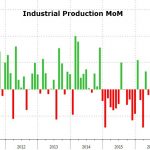Identifying the intrinsic value of a cyclical stock is more difficult than valuing a company with a steady history of growing earnings. However, there are many Dividend Aristocrats and Dividend Champions that are, in fact, cyclical companies. In spite of this cyclicality, they have been able to steadily increase their dividends for over 25 consecutive years in order to make these prestigious dividend growth stock lists.Therefore, since growth of dividend income is important to the dividend growth investor (especially for those in retirement) it only makes sense to include certain cyclical stocks with long histories of growing their dividends in our research activities.
However, it is also important for investors to have a clear perspective of what a cyclical stock is and what it is capable of offering in terms of both capital appreciation and dividend income. As a general statement (and there are exceptions to the rule) cyclical stocks are not fast growers over the long run. Consequently, they are not always the best choice for generating maximum long-term capital appreciation.
Nevertheless, if purchased at sound or attractive valuations, they are often capable of generating strong intermediate-term returns. These strong intermediate returns generally occur when a cyclical stock is purchased at or near the bottom of its cycle. As cyclical stocks move through one cycle to the next, operating results (earnings and cash flows) often achieve periods of explosive growth followed by periods of declining growth. This cyclicality, and the associated extended periods of price volatility, present challenges to the long-term investor. It’s often very hard for many long-term investors to find the fortitude to ride out the cycles.
On the other hand, for the investor looking for a steadily increasing level of dividend income, investing in cyclical stocks at attractive valuations can be quite rewarding. I base this position on two additional general characteristics that many best-of-breed cyclical stocks possess. First of all, is an above-average dividend yield. In order to attract investors, cyclical companies are often more generous with their dividend payouts. I believe they do this to compensate for their lack of consistent or fast growth.
Second, many of the best-of-breed cyclical stocks have conservative financial structures. Competent management teams of best-of-breed cyclical companies understand the need to be conservative with their finances. The most experienced management teams of cyclical companies are keenly aware that a future down cycle is inevitable. Consequently, the best managed cyclical companies tend to be conservative with the management of their cash flows.













Leave A Comment